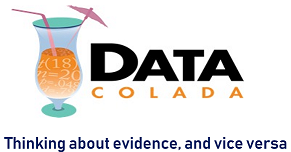As bloggers, commentators, reviewers, and editors, we often criticize the work of fellow academics. In this post I share three ideas to be more civil and persuasive when doing so. But first: should we comment publicly in the first place? One of the best known social psychologist, Susan Fiske (.htm), last week circulated a draft of an invited opinion…
[51] Greg vs. Jamal: Why Didn’t Bertrand and Mullainathan (2004) Replicate?
Bertrand & Mullainathan (2004, .htm) is one of the best known and most cited American Economic Review (AER) papers [1]. It reports a field experiment in which resumes given typically Black names (e.g., Jamal and Lakisha) received fewer callbacks than those given typically White names (e.g., Greg and Emily). This finding is interpreted as evidence of racial discrimination…
[50] Teenagers in Bikinis: Interpreting Police-Shooting Data
The New York Times, on Monday, showcased (.htm) an NBER working paper (.pdf) that proposed that “blacks are 23.8 percent less likely to be shot at by police relative to whites.” (p.22) The paper involved a monumental data collection effort to address an important societal question. The analyses are rigorous, clever and transparently reported. Nevertheless, I do…
[49] P-Curve Won’t Do Your Laundry, But Will Identify Replicable Findings
In a recent critique, Bruns and Ioannidis (PlosONE 2016 .htm) proposed that p-curve makes mistakes when analyzing studies that have collected field/observational data. They write that in such cases: p-curves based on true effects and p‑curves based on null-effects with p-hacking cannot be reliably distinguished” (abstract). In this post we show, with examples involving sex,…
[48] P-hacked Hypotheses Are Deceivingly Robust
Sometimes we selectively report the analyses we run to test a hypothesis. Other times we selectively report which hypotheses we tested. One popular way to p-hack hypotheses involves subgroups. Upon realizing analyses of the entire sample do not produce a significant effect, we check whether analyses of various subsamples — women, or the young, or republicans, or…
[47] Evaluating Replications: 40% Full ≠ 60% Empty
Last October, Science published the paper “Estimating the Reproducibility of Psychological Science” (htm), which reported the results of 100 replication attempts. Today it published a commentary by Gilbert et al. (.htm) as well as a response by the replicators (.htm). The commentary makes two main points. First, because of sampling error, we should not expect all of…
[46] Controlling the Weather
Behavioral scientists have put forth evidence that the weather affects all sorts of things, including the stock market, restaurant tips, car purchases, product returns, art prices, and college admissions. It is not easy to properly study the effects of weather on human behavior. This is because weather is (obviously) seasonal, as is much of what…
[45] Ambitious P-Hacking and P-Curve 4.0
In this post, we first consider how plausible it is for researchers to engage in more ambitious p-hacking (i.e., past the nominal significance level of p<.05). Then, we describe how we have modified p-curve (see app 4.0) to deal with this possibility. Ambitious p-hacking is hard. In “False-Positive Psychology” (SSRN), we simulated the consequences of four…
[44] AsPredicted: Pre-registration Made Easy
Pre-registering a study consists of leaving a written record of how it will be conducted and analyzed. Very few researchers currently pre-register their studies. Maybe it’s because pre-registering is annoying. Maybe it's because researchers don't want to tie their own hands. Or maybe it's because researchers see no benefit to pre-registering. This post addresses these…
[43] Rain & Happiness: Why Didn’t Schwarz & Clore (1983) ‘Replicate’ ?
In my “Small Telescopes” paper, I introduced a new approach to evaluate replication results (SSRN). Among other examples, I described two studies as having failed to replicate the famous Schwarz and Clore (1983) finding that people report being happier with their lives when asked on sunny days. Figure and text from Small Telescopes paper (SSRN) I…
